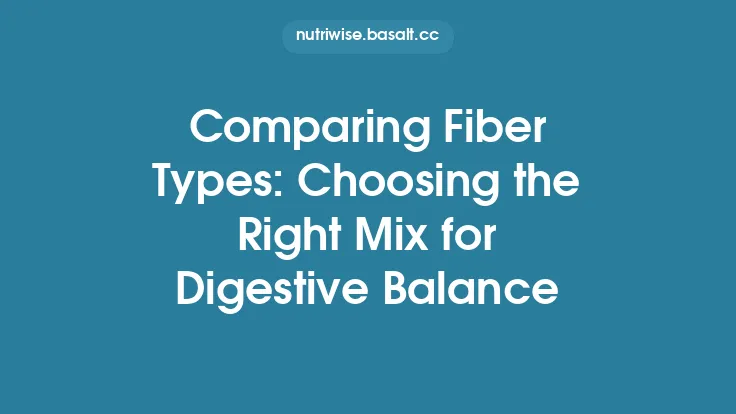Fermentation is a living process, and the microorganisms you introduce at the start are the architects of flavor, texture, and health benefits. Choosing the right starter culture—whether you buy a commercial blend, harvest a traditional back‑slop, or isolate a strain from a trusted source—can mean the difference between a vibrant, probiotic‑rich product and a bland, unstable batch. Below is a comprehensive guide to understanding starter cultures, evaluating their probiotic potential, and matching them to the foods you love to ferment.
What Are Starter Cultures and Why They Matter
A starter culture is a defined collection of live microorganisms deliberately added to a substrate to initiate and steer fermentation. Unlike spontaneous fermentations that rely on ambient microbes, a starter provides:
- Predictability – Known strains produce consistent acidification rates, flavor compounds, and texture changes.
- Safety – Rapid pH drop suppresses pathogenic growth, reducing the risk of spoilage.
- Probiotic potency – Specific strains are selected for their ability to survive gastrointestinal transit and confer health benefits.
In essence, the starter is the “seed” that determines the microbial ecosystem that will dominate the ferment.
Key Microbial Groups Used in Fermentation
| Group | Typical Genera | Primary Metabolic Pathway | Common Ferment Types |
|---|---|---|---|
| Lactic Acid Bacteria (LAB) | *Lactobacillus, Leuconostoc, Pediococcus, Lactococcus* | Homolactic or heterolactic fermentation (lactate production) | Vegetable brines, dairy, grain‑based drinks |
| Acetic Acid Bacteria (AAB) | *Acetobacter, Gluconobacter* | Oxidative conversion of ethanol to acetic acid | Vinegar‑style fermentations, surface‑grown cultures |
| Yeasts | *Saccharomyces, Candida, Kluyveromyces* | Alcoholic fermentation (ethanol + CO₂) | Alcoholic beverages, certain vegetable fermentations |
| Bifidobacteria | *Bifidobacterium* spp. | Bifid shunt (acetate + lactate) | Specialized probiotic blends, dairy alternatives |
| Bacilli | *Bacillus* spp. | Proteolysis, alkaline fermentation | Fermented soy, natto‑type products |
Each group brings distinct enzymatic capabilities that shape the final product’s acidity, aroma, and texture. When selecting a starter, consider which metabolic pathways align with your desired outcome.
Selecting Probiotic Strains for Specific Ferments
- Define the functional goal – Are you targeting gut health, immune modulation, or simply a robust flavor profile?
- Match strain resilience to the substrate –
- *Lactobacillus plantarum* thrives in high‑salt vegetable brines and tolerates a wide pH range.
- *Lactobacillus reuteri* prefers low‑salt, carbohydrate‑rich environments such as fermented soy or grain drinks.
- *Bifidobacterium animalis subsp. lactis* is more sensitive to oxygen and low pH; it works best in dairy‑based matrices or sealed, low‑oxygen containers.
- Check documented health claims – Look for strains with peer‑reviewed evidence for the specific benefit you seek (e.g., *L. rhamnosus* GG for diarrhea prevention).
- Consider synergistic blends – Some commercial starters combine LAB with yeasts to balance acidity and produce mild carbonation, but ensure each strain’s health claim is retained in the blend.
Evaluating Viability and Potency of Starter Cultures
- Colony‑Forming Units (CFU) per gram – A viable starter should deliver at least 10⁶–10⁸ CFU g⁻¹ for most vegetable fermentations; higher counts (10⁹–10¹⁰ CFU g⁻¹) are typical for dairy‑based probiotics.
- Viability after storage – Check the manufacturer’s shelf‑life data. A drop of more than 1 log₁₀ CFU over six months suggests poor stability.
- Strain authentication – Reputable suppliers provide strain identifiers (e.g., ATCC 53103) and genetic sequencing data.
- Absence of contaminants – Look for certifications such as “GRAS” (Generally Recognized As Safe) and “ISO 22000” to ensure the culture is free from pathogens and unwanted microbes.
Matching Cultures to Substrate Characteristics
| Substrate Feature | Ideal Starter Traits | Example Strains |
|---|---|---|
| High salt (≥3 % NaCl) | Halotolerant, rapid acid production | *L. plantarum, L. brevis* |
| Low sugar, high fiber | Strong carbohydrate‑active enzymes, ability to ferment complex polysaccharides | *L. casei, B. subtilis* |
| High protein (soy, legumes) | Proteolytic activity, ability to produce amino‑acid derived flavors | *B. subtilis natto, L. helveticus* |
| Low pH tolerance required (target pH < 3.5) | Aciduric strains that continue activity at low pH | *L. acidophilus, L. fermentum* |
| Oxygen‑sensitive environment | Strict anaerobes or microaerophiles | *L. reuteri, Bifidobacterium* spp. |
Understanding the chemical landscape of your raw material helps you avoid mismatches that lead to sluggish fermentation or off‑flavors.
Optimizing Inoculation Practices
- Inoculation rate – Typical rates range from 0.5 % to 5 % (w/w) of the starter culture relative to the substrate. Higher rates accelerate acidification but may suppress flavor development; lower rates extend the lag phase, increasing the risk of spoilage.
- Temperature control – Most LAB are optimal between 20 °C–30 °C. For thermophilic strains (*L. delbrueckii subsp. bulgaricus*), aim for 40 °C–45 °C.
- Uniform distribution – Dissolve powdered starters in a small amount of sterile water or brine before mixing, or use a liquid concentrate to ensure even colonization.
- Pre‑adaptation – Some advanced fermenters “pre‑condition” the starter by incubating it in a small portion of the substrate for 12–24 h, allowing the culture to acclimate before full‑scale inoculation.
Managing Fermentation Conditions for Probiotic Success
- pH monitoring – Target a rapid drop to ≤4.2 within the first 24–48 h for vegetable ferments; this creates an environment where probiotic LAB dominate while inhibiting spoilage organisms.
- Oxygen management – Surface‑fermented products (e.g., certain vegetable brines) benefit from a thin aerobic layer that supports AAB, but for probiotic‑focused ferments, minimize oxygen exposure using airtight containers or CO₂ flushing.
- Salt concentration – While salt controls texture and microbial growth, excessive levels (>5 % NaCl) can inhibit many probiotic strains. Adjust to the minimum level needed for texture and safety.
- Water activity (a_w) – Ensure the substrate’s a_w remains above 0.95 for LAB activity; drying the product too much will stall fermentation.
Sourcing and Storing Starter Cultures
- Commercial freeze‑dried blends – Offer long shelf‑life and precise strain composition. Store in a cool, dry place; once opened, keep the package sealed and refrigerate to preserve viability.
- Live‑culture liquid starters – Often sold in refrigerated tubs. Use within the “use‑by” date and keep at 4 °C–6 °C.
- Back‑slopping (re‑using a previous batch) – Provides a natural, locally adapted culture. Maintain strict hygiene, and periodically refresh with a fresh commercial starter to avoid genetic drift.
- Home‑isolated strains – Advanced fermenters may isolate strains from traditional foods. Preserve isolates in glycerol stocks at –80 °C for long‑term storage, and periodically revive to confirm activity.
Combining Multiple Strains: Synergy and Risks
- Synergistic effects – Certain LAB and yeasts can co‑metabolize sugars, producing balanced acidity and mild carbonation. For example, *L. plantarum paired with Saccharomyces cerevisiae* can enhance flavor complexity in vegetable brines.
- Antagonism – Some strains produce bacteriocins that inhibit others, potentially reducing probiotic counts. Conduct small‑scale trials when formulating new blends.
- Regulatory considerations – If you intend to market the product with health claims, each strain in the blend must be individually substantiated for the claim.
Testing and Verifying Probiotic Content
- Plate counts – Serial dilution and plating on selective media (e.g., MRS agar for LAB) provides CFU estimates.
- Molecular methods – qPCR with strain‑specific primers can confirm the presence and relative abundance of targeted probiotics.
- Metabolite profiling – Measuring lactic acid, acetic acid, and short‑chain fatty acids helps infer microbial activity and health relevance.
- In‑vitro survivability assays – Simulate gastric (pH ≈ 2) and intestinal (bile salts) conditions to assess how many cells survive the digestive tract.
Adapting Starter Cultures for Personal Health Goals
- Gut‑specific needs – If you seek a strain that produces high levels of butyrate, look for *Clostridium butyricum or certain F. prausnitzii* isolates, though they are less common in commercial blends.
- Immune modulation – *L. rhamnosus GG and B. lactis* BB‑12 have documented effects on mucosal immunity; incorporate them into dairy‑free ferments using suitable carriers (e.g., coconut milk).
- Allergy considerations – Choose starter cultures free from animal‑derived growth media if you have dairy or egg sensitivities. Many manufacturers now offer “vegan‑certified” cultures grown on plant‑based substrates.
Common Pitfalls and How to Avoid Them
| Pitfall | Consequence | Prevention |
|---|---|---|
| Under‑inoculating (≤0.1 % w/w) | Slow acidification, higher spoilage risk | Follow recommended inoculation rates; adjust for temperature |
| Using a starter past its expiration | Reduced CFU, loss of probiotic benefit | Rotate stock, label dates, store properly |
| Ignoring substrate pH | Inadequate suppression of pathogens | Monitor pH daily during the first 48 h |
| Excessive salt or sugar | Inhibits probiotic growth | Keep salt ≤3 % for most LAB; balance sugar for yeast‑driven ferments |
| Cross‑contamination from equipment | Unwanted microbes dominate | Sanitize all tools, use separate containers for different cultures |
Future Trends in Starter Culture Development
- Genetically tailored strains – CRISPR‑based editing is being explored to enhance stress tolerance, increase production of specific metabolites (e.g., GABA, exopolysaccharides), and improve gut‑survival rates.
- Synbiotic starter blends – Combining prebiotic fibers (inulin, resistant starch) directly with probiotic cultures to boost colonization efficiency.
- Microbiome‑informed personalization – Emerging platforms analyze an individual’s gut microbiome and recommend starter cultures that complement existing microbial communities.
- Sustainable production – Fermentation facilities are moving toward plant‑based media and waste‑valorization (e.g., using fruit pomace) to lower the environmental footprint of starter manufacturing.
By understanding the taxonomy, functional traits, and practical handling of starter cultures, you can deliberately shape the microbial landscape of your ferments. The right probiotic blend not only guarantees a safe, flavorful product but also delivers the health benefits that make fermented foods a cornerstone of a wellness‑focused kitchen. Armed with this knowledge, you can experiment confidently, troubleshoot effectively, and ultimately craft ferments that are as nutritious as they are delicious.





